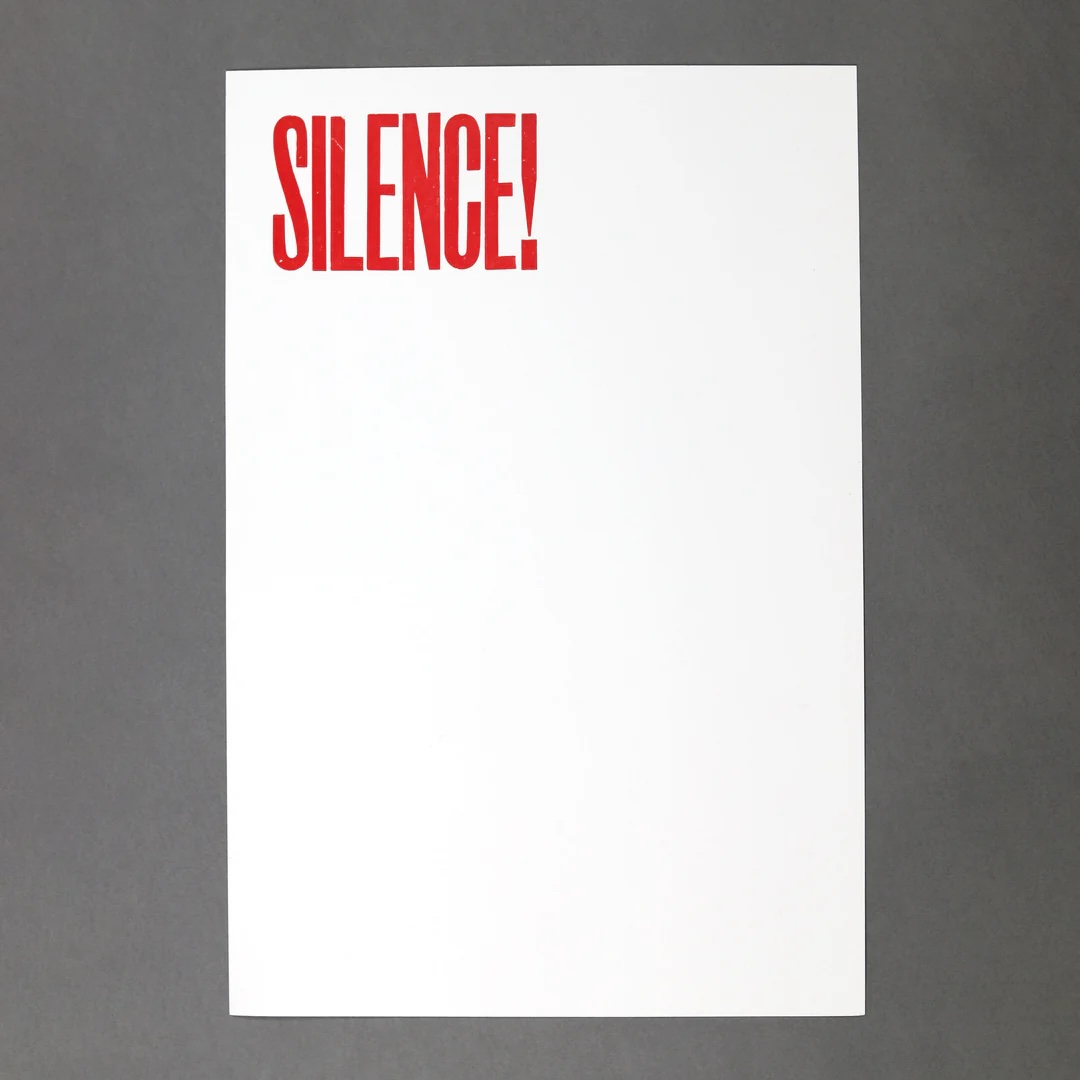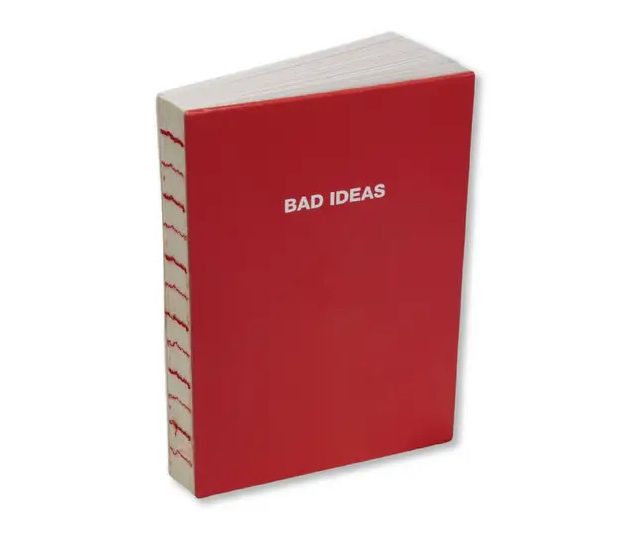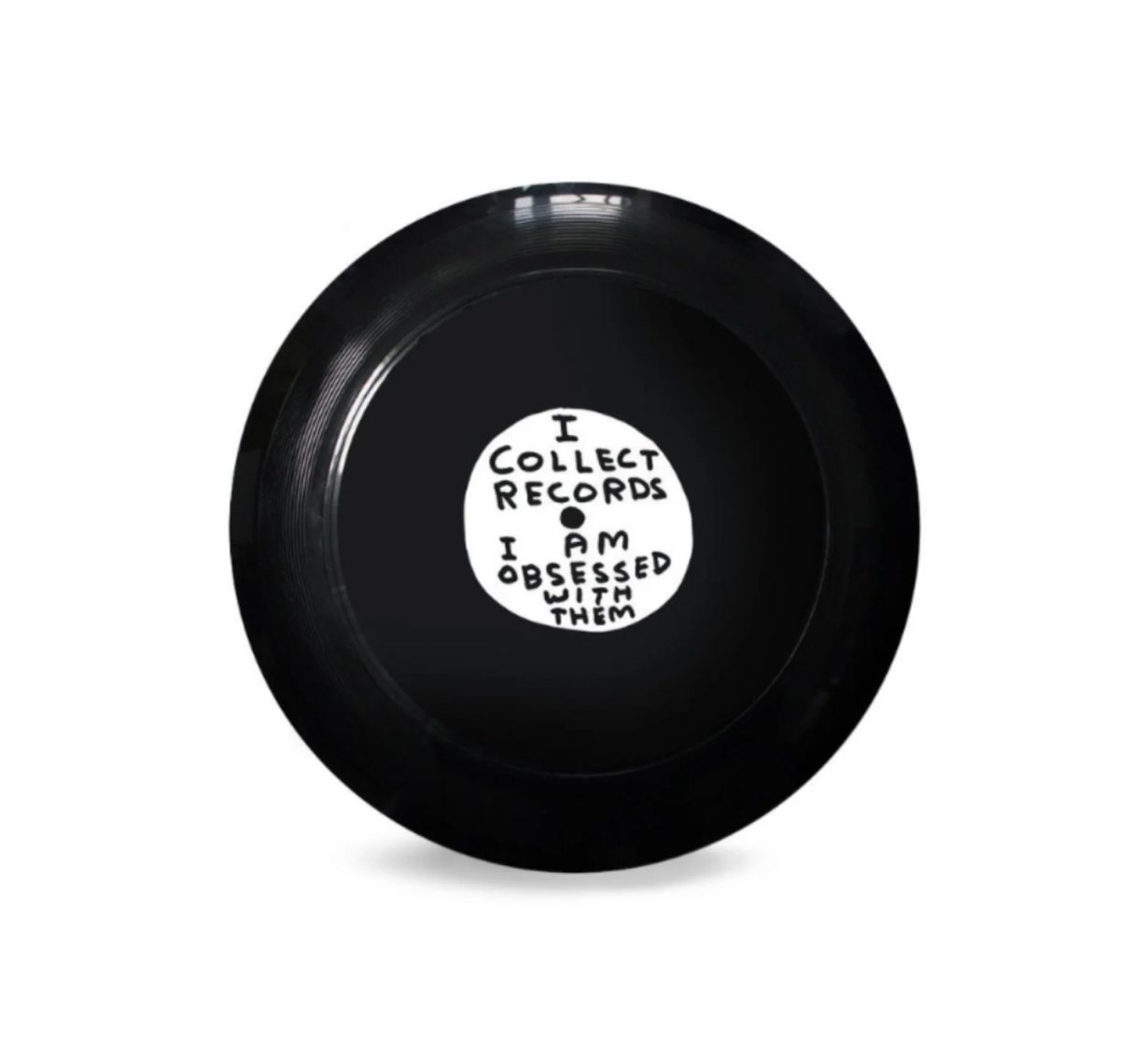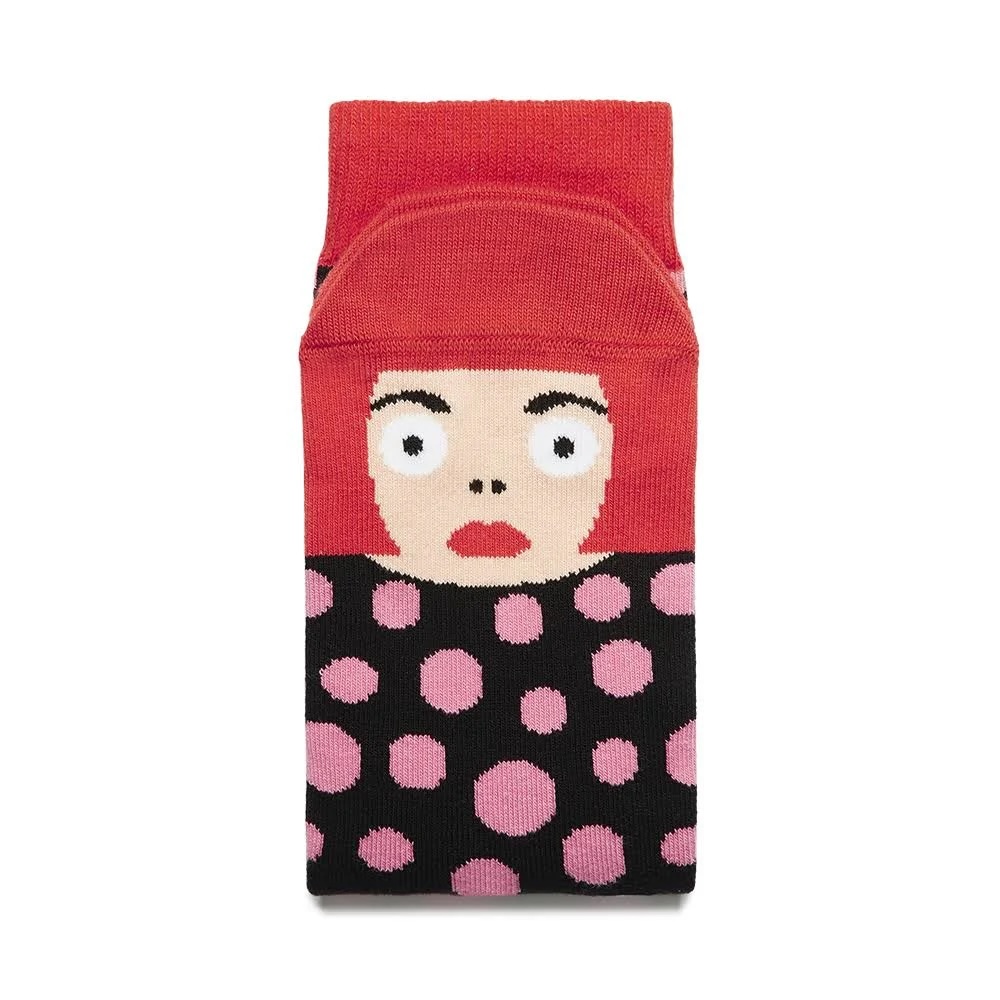People in the artworld are hard to please. We are too. So stop trying to have original ideas and just take ours. No one will love you like you want them to anyway.

Nosferatu
Heretic Parfum, £100
‘There is a reason why all things are as they are.’ That’s what Bram Stoker’s Count tells Jonathan Harker, but it might as well be Stoker – flirtatiously – telling his reader about the Sanguinarian who came to tea. That novel was the reason for F.W. Murnau’s Nosferatu, loosed on the world in 1922 and almost slain from it by a copyright battle with Stoker’s estate – but for a single copy, which was smuggled to the US where, owing to an administrative error, Dracula was out of copyright. Seven decades later, a nine-year-old (which explains a lot) Robert Eggers watches Murnau and Fritz Arno Wagner’s steely, radically Expressionist cinematography on a home VHS. That is the reason we have Eggers’s upcoming remake, out this December. And of course that, dear reader, is the reason we have this parfum, containing Oud wax, Labdanum resin and Vegan Ambergris. ‘Eau de Macabre’; Eau de Nosferatu. Alexander Leissle

Karl Marx ‘Das Kapital’ Money Bank
Dundee Contemporary Arts, £17.95
Time is invented by clockmakers to sell watches, so the story goes, and Valentine’s Day to sell chocolates. Santa Claus too, I’ve just heard, was really invented in the 1930s by Coca-Cola, which explains the red costume. And before that he was often represented as an elflike figure. (Now he rules over them – another allegory of capitalism?) Consumerism under the guise of love and hospitality are obviously jokes for any sensible Marxist. The real deal is, however, that now you can buy a Karl Marx money bank (Low stock!) for someone so they can start saving up for their next round of gift giving. Yuwen Jiang

Ryan Gander, The scent of the artist’s monograph, 2024
House of Voltaire, £90
A quick scan of reviews of the best scented candles for 2024 reveal fragrances that range from the conventionally evocative to the complexly self-aware, full of subtle cultural references and in-jokes, self-consciously gaming the power of fragrance to alter our perceptions of where we are and what, if anything, it means. There are those solidly, reassuringly place-based aromas of ‘Fir Tree’ (by The White Company) and ‘Log Fire’ (by Daylesford); there’s the more unstably class-specific smell of ‘The Dorchester Spa’ (probably a nice bit of the spa, maybe not the toilets); there’s the vaguely kinky-in-a-posh-way of ‘Bridle Leather’ (by House of Swaine); the almost-certainly disappointing ‘Happiness’ (by Neom); Dior’s ‘Ambre Nuit’, which, winningly, is described simply as ‘rich-smelling’; the self-deprecating irony of ‘Bubble Bath’ by arch fashion miserablists Maison Margiela; and the ‘smell of old books’ – and no doubt borrowed intellectualism – that is Byredo’s ‘Bibliotèque’. Once you’ve got all those fired up, you might as well add whimsical conceptualist Ryan Gander’s ‘The Scent of the Artist’s Monograph’. As someone who owns Gander’s monograph, I can confirm that it smells clever, wryly reflexive and art-historically aware. But the candle is even better, because you don’t need to read anything, or own any bookshelves. Except maybe to put a candle on. J.J. Charlesworth

Pavel Büchler, Silence!
Ikon Gallery, £360 (sale price)
We all know that ‘almost any speech act is really the performance of several acts at once, distinguished by different aspects of the speaker’s intention: there is the act of saying something, what one does in saying it, such as requesting or promising, and how one is trying to affect one’s audience’. But asking people to shut up is often the most totally paradoxical speech act imaginable. You violate your command simply by issuing it! And what kind of example is that? You look like a fool. People will pity you. And, before you know it, the elves will be running Santa’s workshop. No one wants that. That’s why Czech-born artist Pavel Büchler came up with this sign: so you never need to come off as a hypocrite again. When you are telling people to shut up. Of course, you might still be a hypocrite in other ways. Pavel can’t fix that. Nirmala Devi

Bad Ideas / Good Ideas Notebook x Marina Abramovic
ICA Boston, £24
Why not get a present from the ‘artist is present’ artist herself? One side of this notebook has a white cover, labelled ‘Good Ideas’. Flip it over, and it’s a red cover labelled ‘Bad Ideas’. Apparently, this was one of Marina Abramovic’s ‘good ideas’ to get these made up, so that all us Abramovic acolytes can write down all the ‘bad’ gumpf that pops up in our dizzy heads to maybe get enough distance from it to decide if it can pass muster to become ‘good’. Maybe we can file this with all her other ‘good’ ideas, like restaging old works as Adidas commercials, or not heeding the call of Augmented Reality Satanism. But then as Abramovic so readily asks, how do you know when an idea is good or bad? It’s so easy to get them mixed up, and a scrawled note in the ‘bad’ side accidentally becomes another, ever more elaborate, self-aggrandising opera. And what happens when you reach the middle of the notebook? Does the fabric of reality fold in on itself? Or does everything simply become performance? Chris Fite-Wassilak

Anthea Hamilton, Joints, 2022
Chisenhale Gallery, £1245
The year is 2085. You see an elegant stranger lighting up outside a crowded private view and cross the street to bum a cheeky cigarette off them. They refuse, on account of a pack now costing well over £1000. Oh well, it was worth a try. Smoking has become the elevated pastime of the super rich, with the rest of us left to huff on infantilising cherry-flavoured vapes that look like they were designed for toddlers. Meanwhile, sculptures like this pigmented microcrystalline wax and plaster doozy created by Anthea Hamilton offer excellent value by comparison, a quiet monument to the joy of smoking in a world intent on stubbing it out. Louise Benson

Ai Weiwei, 3D Printing of My Left Hand, 2022
£15,000, Serpentine Galleries
Navigating an age when we’re now being encouraged to express how we feel more freely can be tricky. How much should we really reveal about ourselves? (‘We listen,’ they say, ‘we don’t judge,’ they say.) On the one hand, we should be able to talk about our emotions (whether they be good, bad or downright hideous). On the other, in order to have as functioning a society as possible, (or at the very least, a pleasant Christmas day lunch with family) the general consensus is that there is wisdom in knowing when to hold back. Especially when we’re talking about the uglier end of those feelings. After all, ‘How much worse are the consequences of anger than that which caused it?’ But we also all know that bottling it up isn’t the answer. This Christmas, give your loved ones the gift of self-expression. Fi Churchman

David Shrigley: Collect Records
Baltic Centre for Contemporary Art, £25
My brother is a musician. A very, very talented one at that. But it’s hard, almost impossible, to be a musician and an older brother without falling victim to some good-natured teasing about your vinyl bro tendencies. Bro is short for brother, after all. For Christmas, I almost bought him this David Shrigley frisbee which looks like a record and reads ‘I collect records / I am obsessed with them’. Because no one who collects records in the 2020s isn’t obsessed. Because ‘I have this on vinyl’ is a joke I make about almost I-was-there-first: you’re recommending the croissants from the bakery across from South London Gallery? Oh, I’ve been. ‘I have this pastry on vinyl’. It’s funny because it’s so clear what sort of dude you’re referencing. And he may be related to me. Orit Gat

Heroin and Cocaine Shakers
Baltic Centre for Contemporary Art, £47.95
Heroin and cocaine are both white powders so can be easily confused from each other. But they’re quite different, one is an opioid made from poppy flowers and tastes rather bland, while the other a stimulant from coca leaf that has a strong, bitter taste. This condiment set allows you to keep them from being mixed up and give you more control over your holiday flavours. Yuwen Jiang

Pocket can opener
Amazon, £1.51
Tired of the generally overly-priced, sub-par quality of refreshments that most museum and art gallery cafes and restaurants tend to offer? Forgo the dry-crumbed cakes, freshly wilted salads and papery tomato focaccia sandwiches and follow the recent trend: BYOT. There are so many types of tinned foods to choose from, and what’s more, with this handy pocket can opener, you won’t be limited to those tins with ring-pulls – or the cafe’s confines. Instead, you can crack open a can and wander freely through exhibitions with your soup in hand. Just be careful not to trip. Fi Churchman

Loncraine Broxton: Innovations & Executive Toys 1969-1997 by Richard Loncraine & Peter Broxton
Four Corners Books, £15
Long before editioned works of contemporary art were given as gifts, there were ‘executive toys’. Emerging in Britain back in the distant reaches of the 1970s and 80s, these were playthings for grownups, humourous tchotchkes, desk ornaments for businessmen who wanted to show they didn’t take themselves too seriously, handheld games and puzzles for those switched on to new waves in art and design, ironic consumer objects for a consumerist culture. In 1967, ex-artschool entrepreneurs Richard Loncraine and Peter Broxton released the first Ballrace, the clacking Newton’s cradle of steel balls hanging from a chrome frame. Before long shops were full of magnetic desk-sculptures, hexagonal mazes trapping blobs of sparkling mercury, and ballpoint pens in the shape of a fish. Loncraine Broxton went bust in 1997, a victim of its own long, zany success popularising the quirky gift object. This book revisits the company’s zeitgeist-making catalogue of weird and wonderful things. What it reveals, amusingly, is how the stylistic vocabulary of 1960s art – the brightly coloured steel sculptures, kinetic objects and Pop’s own consumerist surrealism – could be reclaimed and repurposed into what might be described as handheld sculptures; little design-art objects created to frustrate, delight and entertain. Now, if only all limited edition artworks were this much fun. J.J. Charlesworth

Sorry I Don’t Work Here (Blue)
IDEA Store, £40
It’s peak season but the gallery is empty. Across the space, there’s a figure dressed in black, silhouetted against the white cube: well-postured but their neck on a downward arch; hands gathered as if at Sunday mass; motionless bar an index-fingernail scraping at the thumb-cuticle; a bead of sweat obscured by a cap brim; vacant-gazed, gently disassociating. You hesitate, then approach.
“Hi, sorry, do- … does the gallery have a toilet?”
“Sorry,” the critic replies. “I don’t work here.” Alexander Leissle

Southwest China High Speed Rail Network
PC Download, £19.99
Over 570km of fun with this classic train simulator. Not only is it Train Simulator’s fastest route – that ten-hour chug from Chengdu to Chongqing now takes just one (but you’ll need to download the CRH380A or 480D High Speed Train to really feel the power); it’s also a chance to check out 22 Chinese stations, the beautiful scenery of the Sichuan Basin area and the magic of the CTCS-3 signalling system. It’s also handy for being fully prepared should you have to take over the operations of a high-speed train when you visit the real thing. Although the whole real/not real thing is really a bit of an anachronistic distinction in today’s world, one that’s best left buried along with René Descartes. These days it’s all about being in harmony with the dao. Although, naturally, you arty types are probably thinking that it’s more like a chance to recreate Doug Aitken’s Station to Station (2015). Sad. Liven it up with a side order of Toto’s Gypsy Train (1992): ‘All aboard/now don’t you be afraid/let’s ride…’. Nirmala Devi

Looseleaf Unisex Classic Tee
E For Effort, $50
Some writers say that there’s nothing more fear-inducing than a blank page. Writer’s block, blank page syndrome, whatever you want to call the hollowed-out lottery of successfully not getting a single word down. Well, if you can’t beat it, wear it. Made by artists, who understand the weight of emptiness, there’s lined paper T-shirts or tote bags, depending on your levels of frustration. And nothing quite says stunted creativity like harking back to your school days, as the fat red margin running down these beauts reminds you to stay in line. Just in time for those family chats when they ask ‘how it’s all going’, while they have little to no idea of what ‘it’ actually is, now you can simply point to the shirt to share how much you’ve actually achieved. Chris Fite-Wassilak

Yayoi Toesama socks
Chatty Feet, £9
Ninety-five-year-old Yayoi Kusama, with her blunt red bob and red lipstick, is just as recognisable as her polka-dot-covered, pumpkin-shaped work. Take her recent collaboration with Louis Vuitton, for which the brand took it upon themselves to roll out a series of lifesize animatronic robots of Kusama herself. Creepy, uncanny and, seemingly, catnip for the Instagram hordes eager for a selfie with the artist’s gloomily gormless likeness. Perhaps the crowds were just eager for a piece of Kusama they could afford amid the frenzied prices of the Vuitton accessories themselves, with bags starting from upwards of £3,000, while this September a limited-edition Kusama handbag sold for $151,200 at Christie’s in New York. One accessory overlooked by both the brand and the artist, however, is the humble sock (an underrated classic in the Christmas present pantheon). This is where a pair designed to look like Kusama herself comes in. Just as gimmicky for a fraction of the price; and less creepy to boot (no pun intended). Go on: it’s what Kusama would want. Louise Benson

Or you could just, ahem, buy… us.